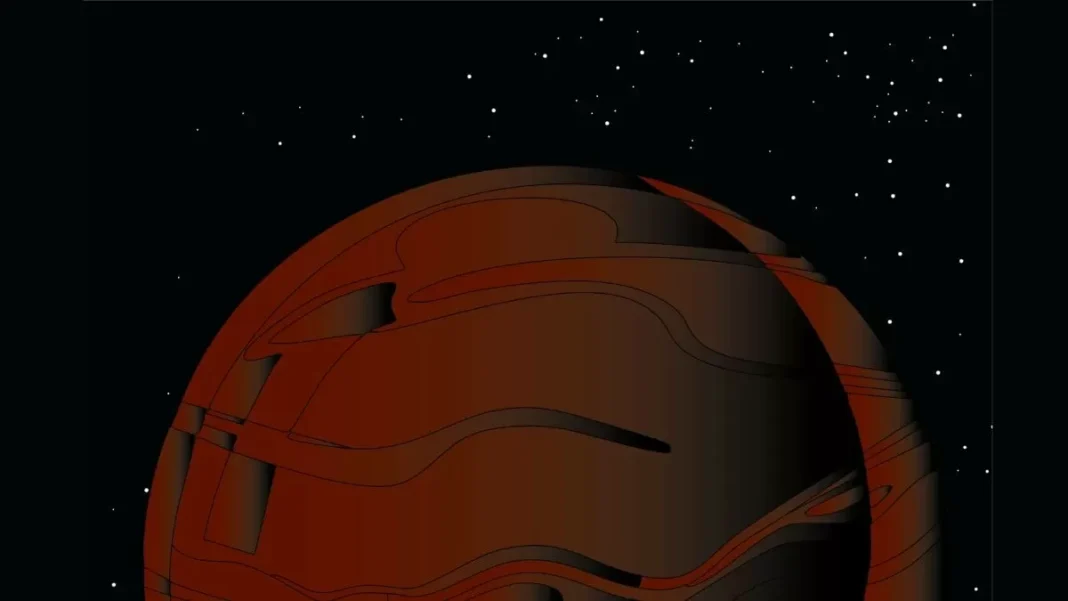Scientists have always been fascinated by the mysteries of the universe, and one of the greatest mysteries that has puzzled them for decades is the nature of dark matter. This elusive substance makes up about 85% of the total matter in the universe, yet it remains invisible and undetectable by traditional means. However, a recent breakthrough by a team of scientists has shed new light on the subject, proposing a new class of stellar objects called “dark dwarfs.”
These dark dwarfs are sub-stellar bodies that are believed to be found near the galaxy’s core, where the concentration of dark matter is the highest. Unlike traditional stars, which derive their energy from nuclear fusion, dark dwarfs would be powered by the annihilation of dark matter particles. This means that they would not emit any light, but rather glow faintly from the energy released by the collision of dark matter particles.
The concept of dark dwarfs is not entirely new, as scientists have long speculated about the existence of such objects. However, it was only recently that a team of researchers from the University of California, Irvine, and the University of California, Riverside, proposed a theoretical model that could explain the formation and behavior of these mysterious objects.
Their study, published in the journal Physical Review Letters, suggests that dark dwarfs would be made up of Weakly Interacting Massive Particles (WIMPs), which are one of the leading candidates for dark matter. These particles are believed to interact with regular matter only through the weak nuclear force, making them extremely difficult to detect.
According to the researchers, dark dwarfs would be about the size of Jupiter, but with a mass equivalent to that of a small star. This means that they would have a high density, making them incredibly dense and compact objects. And while they would not emit any light, their presence could be detected through the gravitational pull they exert on surrounding objects.
The proposed model also explains how dark dwarfs would form near the galaxy’s core. As dark matter particles collide and annihilate, they release a tremendous amount of energy, which would cause the gas and dust in the vicinity to heat up and form a dense cloud. Over time, this cloud would collapse under its own gravity, giving birth to a dark dwarf.
One of the most exciting aspects of this new class of objects is that they could hold crucial clues about the nature of dark matter. Up until now, scientists have only been able to study dark matter indirectly through its gravitational effects on visible matter. But with dark dwarfs, we could have a direct glimpse into the properties and behavior of this mysterious substance.
Furthermore, the existence of dark dwarfs would also provide a new way to search for dark matter. Traditional detection methods, such as particle colliders and underground experiments, have so far failed to find any conclusive evidence of dark matter. But with the proposed model, scientists could potentially detect dark matter by observing the faint glow of dark dwarfs.
The discovery of dark dwarfs could also have significant implications for our understanding of the universe’s evolution. By studying the distribution and properties of these objects, scientists could gain insights into how dark matter has shaped the formation and evolution of galaxies.
However, it is essential to note that the existence of dark dwarfs is still a theoretical concept, and further research and observations are needed to confirm their existence. But if proven, this new class of objects could revolutionize our understanding of the universe and help us unravel the mysteries of dark matter.
In conclusion, the proposal of dark dwarfs is a significant breakthrough in the field of astrophysics, offering a new perspective on the elusive nature of dark matter. These sub-stellar objects, powered by the annihilation of dark matter particles, could hold the key to unlocking the secrets of the universe. With further research and observations, we could finally shed light on one of the greatest mysteries of our time.


